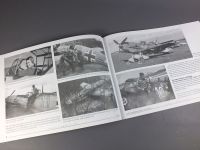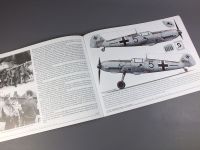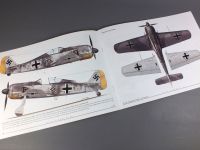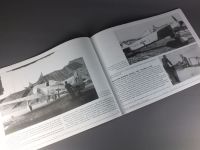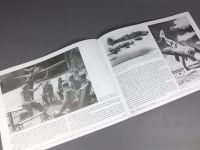Kagero | JG 26 Jagdgeschwader "Schlageter"
Reviewed by Radu Brinzan
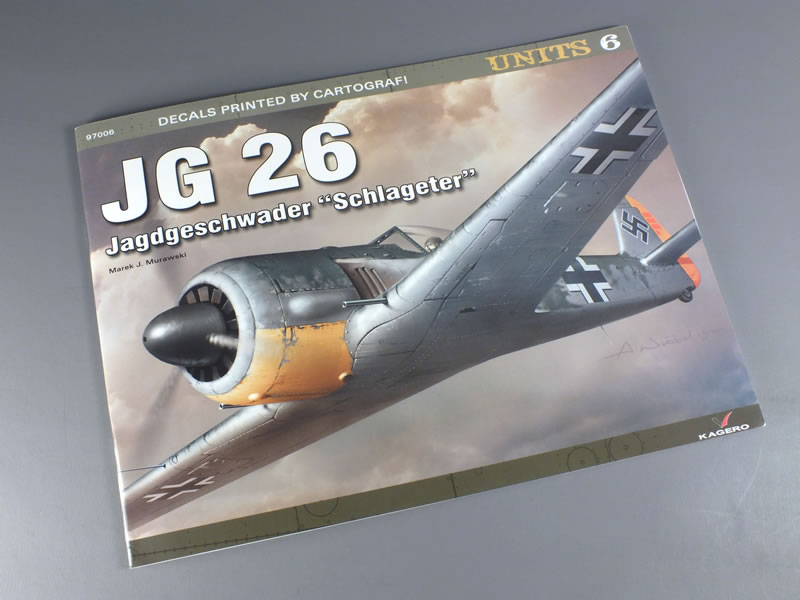
JG 26 Jagdgeschwader ‘Schlageter’ is a recent publication from the Polish publishers Kagero, created by Marek J. Murawski, number 6 in their “Units” series, catalogue No. 97006.
This 32-page publication comes in an A4 landscape format with gloss thick cardboard covers and beautifully printed gloss pages, all enclosed in a thin and clear transparent plastic wallet. This package also includes one decal sheet with markings for three aircraft described in the book, in scales 1/72, 1/48 and 1/32.
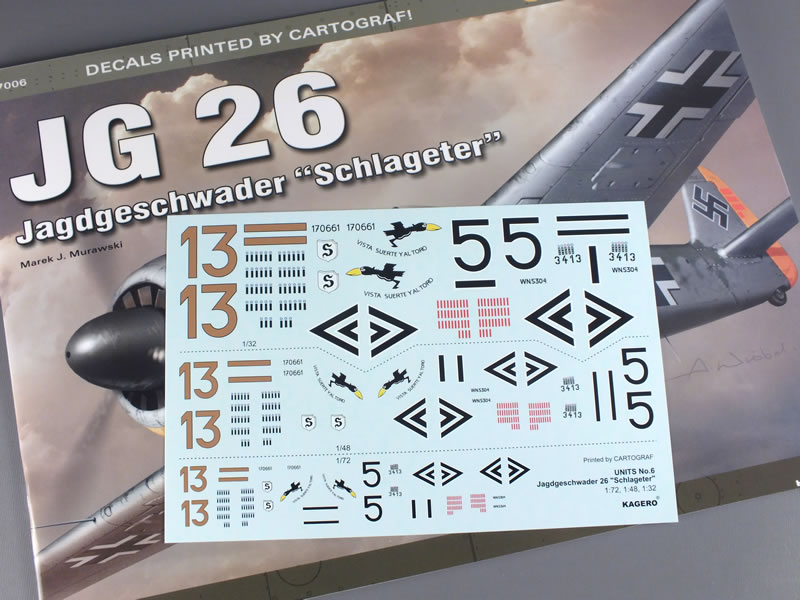
The publication contains 40 beautiful black-and-white photos and vivid colour illustrations of four German planes of various types used by JG 26 during World War 2. In the case of the colour illustrations the colours and markings are thoroughly described as well as significant events that they were involved in.
The text of this publication is entirely in English and covers the activity of the unit from its creation until the end of the war through the following stages:
- Inter-war period: November 1, 1938 - September 1939
- The Phony War: September 1, 1939 - May 9, 1940
- The Western Campaign: May 10, 1940 - June 1940
- The Battle of Britain and fighting over the Channel: June 25, 1940 - June 21, 1941
- 7./JG 26 over the Mediterranean: February 7, 1941 - September 24, 1941
- Fighting over the Channel and the French Coast: June 22, 1941 - December 31, 1941
- The first line of defense: January 1, 1942 - December 31, 1942
- Fighting on two fronts: January 1, 1943 - May 31, 1943
- Facing the “Mighty Eighth”: June 1, 1943 - December 31, 1943
- Before and after D Day: January 1, 1944 - December 31, 1944
- Facing the defeat: January 1, 1945 - May 8, 1945
The book concludes with a number of lists:
- Commanding officers of JG 26 and its sub-units: this lists a very impressive roll-call of officers in charge of the units and the respective periods. Some of the famous names included here are Adolf Galland, Pips Priller or Johannes Steinhoff.
- Selected examples of aircraft in service with JG 26: this lists a sample of the types of aircraft used by the unit, in what quantities and for what periods.
The black-and-white photographs cover a wide range of aircraft of various types throughout the war, such as Bf 109 E, Bf 109 G, FW 190 A and FW 190 D. Also featured are a number of well-known pilots that few with JG 26 such as (probably the most famous) Adolf Galland, Josef Priller. Of great interest to fans of dioramas are also photos showing the planes during servicing, replenishing or just placed in a busy airfield setting.
The colour illustrations are:
- Messerschmitt Bf 109 E-1; W.Nr. 3413, “Black 5” flown by Lt. Hans Krug of 5./JG 26, Chievres airfield, France, Early June 1940. This aircraft, illustrated only in profile, features an attractive high-demarcation camouflage scheme, a large graffito of a black crow in a dive with the Spanish slogan “VISTA SUERTE Y AL TORO” and a tally of five victories. This is one of the markings included on the decal sheet.
- Focke-Wulf FW 190 A-2; W.Nr. 0125304, “Double Chevron” flown by Hptm. Johannes Seifert, Kommandeur of I./JG 26, St. Omer-Arques airfield, France, late May 1942. This aircraft, illustrated in profile and top and bottom views, features a tally of 35 victories on the tail. This is one of the markings included on the decal sheet.
- Messerschmit Bf 109 G-6; flown by Hptm. Klaus Mietusch, Kommandeur of III./JG 26, Nordholz airfield, Germany, late July 1943. This aircraft, illustrated only in profile, features a yellow rudder and a yellow patch under the engine. A portrait of the pilot is also included.
- Focke-Wulf FW 190 A-8; W.Nr. 170661, “Brown 13” flown by Lt. Gerhard Vogt, Kapitaen of 7./JG 26, France, June 1944. This aircraft, illustrated in profile on the back cover, features a tally of 27 victories on the tail. This is one of the markings included on the decal sheet.
This is yet another beautifully-presented book from Kagero. It is a very clear and concise history of the unit with rich detail and interesting stories, a very useful starting point for anyone interested in the activity of the unit. The quality of the illustrations and the printing are among the best available today. The decals are printed by Cartograf, they are clear, sharp and printed in perfect register.
© Radu Brinzan 2013
This review was published on Thursday, November 28 2013; Last modified on Friday, November 29 2013

